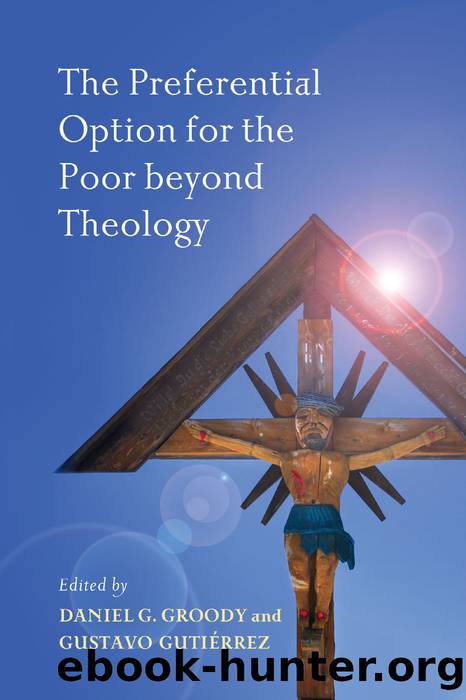The Preferential Option for the Poor Beyond Theology by Groody Daniel G.;Gutierrez Gustavo A.;

Author:Groody, Daniel G.;Gutierrez, Gustavo A.;
Language: eng
Format: epub
Publisher: University of Notre Dame Press
Published: 2016-08-15T00:00:00+00:00
SCIENCE MISUSED TO OPPRESS THE POOR
How does flawed science contribute to environmental injustice problems like those just cited? In the United States, often it occurs in environmental-impact assessments. Since 1969 the U.S. National Environmental Policy Act has mandated that an environmental-impact assessment must be done for any building project, regulated by the federal government, that has environmental or public health impacts. Examples include siting a nuclear power plant, a toxic waste dump, or expanding a manufacturing facility. Every year in the United States, roughly 2500â3000 environmental-impact assessments are produced, in virtually every state. Most of these assessments are written by corporations wishing to site or expand some plant. The law requires that a draft of the assessment be completed, that it be released to the public and to the affected community, and that the community have weeks or months to respond (to the federal government) regarding the adequacy of the assessment. Addressing resulting citizen comments, the government authorizes a final, corrected environmental-impact assessment. On its basis, officials either approve, disapprove, or amend the project in question. As the preceding section suggests, most hazardous facilities are sited in poor or minority communities. Why? One reason is that poor and minority communities are those least able either to criticize the draft environmental-impact assessment or to pay outside scientific consultants to respond to it. As a result, extremely flawed science is often used to justify placing additional noxious facilities in already heavily polluted, largely poor or minority communitiesâlike Robbins, Illinois. The same facilities would quickly be disallowed in wealthier communities.49
Consider a recent case, a proposal by a multinational corporation, Louisiana Energy Services (LES), to build a uranium-enrichment facility to produce fuel for commercial nuclear reactors. LES proposed putting the highly polluting plant in an African American community in Homer, Louisiana. Widely regarded as the first major U.S. environmental justice victory, it is a good example of how a poor, minority community was able to prevent its being targeted for noxious pollution. Except for its being an environmental justice success story, the Homer case is fairly typical of those in which environmental injustice occurs. Most poor communities, however, do not have the outside resources to help them avoid oppression. One of the poorest towns in the United States, Homer has a per capita income of only about $5000 per year. Members of the local community were able to stop the facility only because of unpaid scientific help from outside experts, some of whom were this author and her doctoral students. After they helped stop the Louisiana facility in 1997, LES proposed building in another black community in Tennessee. Again LES was defeated after local poor and minority people received pro bono help from outside experts. As of summer 2006, the multinational corporation is now attempting to site the plant near Eunice, New Mexicoâan area with a 20 percent poverty rate and 50 percent minority population, mostly Hispanics and Native Americans. Both figures are nearly double the U.S. poverty and minority population averages.50
How has LES
Download
This site does not store any files on its server. We only index and link to content provided by other sites. Please contact the content providers to delete copyright contents if any and email us, we'll remove relevant links or contents immediately.
Fangirl by Rainbow Rowell(8807)
How to Bang a Billionaire by Alexis Hall(7941)
Wonder by R. J. Palacio(7749)
The Space Between by Michelle L. Teichman(6588)
The Thirst by Nesbo Jo(6452)
Assassin’s Fate by Robin Hobb(5867)
Wiseguy by Nicholas Pileggi(5333)
The Night Circus by Erin Morgenstern(5042)
The Kite Runner by Khaled Hosseini(4962)
Paper Towns by Green John(4811)
Bittersweet (True North #1) by Sarina Bowen(4719)
Gerald's Game by Stephen King(4386)
Too Much and Not the Mood by Durga Chew-Bose(4105)
Pillow Thoughts by Courtney Peppernell(4034)
Goodbye Paradise(3463)
Twelve Days of Christmas by Debbie Macomber(3421)
Good by S. Walden(3361)
The Rosie Effect by Graeme Simsion(3223)
The Cellar by Natasha Preston(3080)
